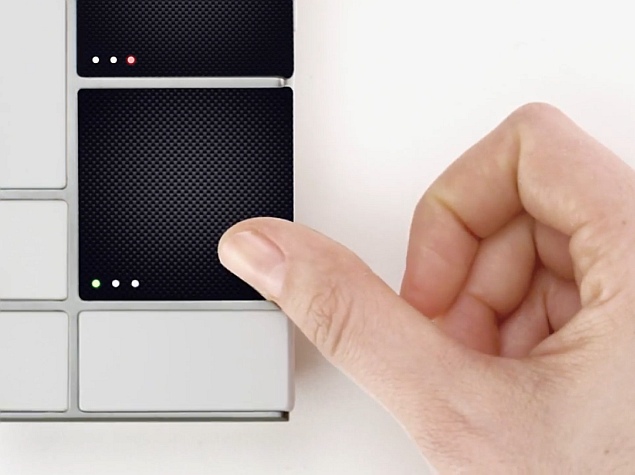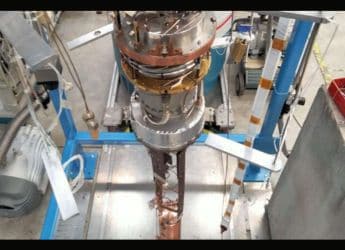- Home
- Mobiles
- Mobiles News
- Google Unveils Spiral 2 Project Ara Prototype, Pilot Program in Puerto Rico
Google Unveils Spiral 2 Project Ara Prototype, Pilot Program in Puerto Rico

The company will partner with Mexico-based carrier Claro and local carrier Open Mobile to offer the product sometime after Q2, and it will be sold from free-standing stores that look like food trucks, said Jessica Beavers, a Google marketing executive.
She said Puerto Rico was chosen in part because more than 90 percent of households on the island of nearly 3.7 million people use a cellphone and 77 percent of Internet access occurs through mobile devices.
"All of this makes for a truly interesting carrier landscape," she said at a module developers conference at Google's headquarters in California. "Mobile devices are a huge part of daily life" in Puerto Rico.
The Spiral 3 prototype is scheduled to be readied and specifications finalised before the launch that's due after Q2 2015.
The pilot program is still being developed, but Beavers said she envisions stores first opening in the capital of San Juan, followed by Ponce, the island's second largest city. Stores would eventually open in other cities.
Google would manufacture and sell the phone frame as well as modules created by individual manufacturers that can be added to it like Legos. Modules would range from a screen to a camera to speakers to even a pedometer, depending on people's needs.
"We want people to walk away and say, 'That was really freaking awesome,'" Beavers said.
Google says it's too early to say how much the phone could cost, but it might be in the $50 to $100 range.
In the meanwhile, Google also showcased a new modular smartphone prototype, called the Spiral 2.
The new Project Ara Spiral 2 prototype features a HD (720x1280 pixels) screen, choice of Nvidia Tegra K1 or Marvel PX1928 processor, 5-megapixel primary camera, Micro-USB port, battery, speaker, and connectivity options include Wi-Fi, Bluetooth, and 3G. Google revealed that the Spiral 2 prototype includes 11 working modules as of now; though claimed that it plans to add up to 20-30 by end of the year.
Modules include 3G (with Band 2 and 1x1 Band 5 antennas), Wi-Fi, Bluetooth, Receiver with light and proximity sensors, USB charger module, and a 2x2 battery module. The Spiral 2 prototype also features the electro-permanent magnets in the exoskeleton, saving space in the modules.
The latest version of the Module Developers Kit (MDK), MDK 2.0, was also released, and is available for download via the Project Ara site.
Google has also announced the Project Ara Configurator app, which will let users choose the modules on the Project Ara smartphone and see how it will look before they buy it. It will also show how the bought configuration will look after modules have been swapped. The app is expected to be released before the Spiral 3 prototype is launched.
The company expects that the next iteration, Spiral 3, will pack upgraded features such as 4G LTE connectivity, improved camera, a bigger battery, and inductive connection modules. A Rockchip AP reference design is also promised by then, along with the release of the MDK 0.5 and the module Marketplace.
The company has had success with its Chromebook computers, which are lightweight, low-priced laptops that require Internet connections to access most programs and other features, but it relies on outside manufacturers for the product. It has had more difficulty selling devices it makes on its own. Google Glass, its Internet-connected eyewear, still hasn't made it to the mass market more than two years after its release to developers and a digital media player called the Nexus Q was scrapped within a few months of its unveiling in 2012.
Rafael Leon, a Radio Shack employee in San Juan, said he expects many Puerto Ricans to embrace the modular phone, noting that they are always eager to buy the newest mobile devices and don't mind standing in long lines.
"They always want to be ahead with what's newest, with what's innovative," he said, adding that despite the island's long economic slump, cellphone sales have always been good. "You tell them it costs $800 and they're not fazed."
Others took a more reserved stance.
Carl Lizarraga, a San Juan engineer, said he was surprised by the announcement.
"Typically, the island isn't used as a testing ground for this sort of project," he said. "I'm not planning on buying it yet as at this point it seems more a gimmick than anything else. When the idea is further developed and able to compete with the current flagships, I would consider it."
Giancarlo Gonzalez, chief information officer for Puerto Rico's government, said in a phone interview from Google's headquarters that the company approached him and other officials in mid-2014 with their proposal.
He said he hopes the pilot program grows into something bigger that will allow programmers in Puerto Rico to develop modules and export them.
"It would represent great technological growth," he said.
Written with inputs from AP
Catch the latest from the Consumer Electronics Show on Gadgets 360, at our CES 2026 hub.
Related Stories
- Samsung Galaxy Unpacked 2025
- ChatGPT
- Redmi Note 14 Pro+
- iPhone 16
- Apple Vision Pro
- Oneplus 12
- OnePlus Nord CE 3 Lite 5G
- iPhone 13
- Xiaomi 14 Pro
- Oppo Find N3
- Tecno Spark Go (2023)
- Realme V30
- Best Phones Under 25000
- Samsung Galaxy S24 Series
- Cryptocurrency
- iQoo 12
- Samsung Galaxy S24 Ultra
- Giottus
- Samsung Galaxy Z Flip 5
- Apple 'Scary Fast'
- Housefull 5
- GoPro Hero 12 Black Review
- Invincible Season 2
- JioGlass
- HD Ready TV
- Laptop Under 50000
- Smartwatch Under 10000
- Latest Mobile Phones
- Compare Phones
- OPPO Reno 15 Pro Max
- Honor Win RT
- Honor Win
- Xiaomi 17 Ultra Leica Edition
- Xiaomi 17 Ultra
- Huawei Nova 15
- Huawei Nova 15 Pro
- Huawei Nova 15 Ultra
- Asus ProArt P16
- MacBook Pro 14-inch (M5, 2025)
- OPPO Pad Air 5
- Huawei MatePad 11.5 (2026)
- Xiaomi Watch 5
- Huawei Watch 10th Anniversary Edition
- Acerpure Nitro Z Series 100-inch QLED TV
- Samsung 43 Inch LED Ultra HD (4K) Smart TV (UA43UE81AFULXL)
- Asus ROG Ally
- Nintendo Switch Lite
- Haier 1.6 Ton 5 Star Inverter Split AC (HSU19G-MZAID5BN-INV)
- Haier 1.6 Ton 5 Star Inverter Split AC (HSU19G-MZAIM5BN-INV)

















